Lyme disease, often referred to as the great imitator, can have an array of symptoms.
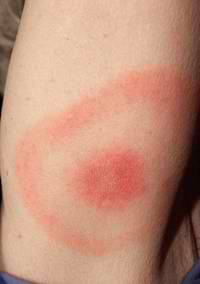
In past blogs, I have talked about how Lyme disease symptoms present differently from one person to the next. Children’s Lyme symptoms can be extremely tricky. Some children never show visible symptoms. One study of 15,000 children with confirmed Lyme disease, had about 10% of patients presenting the telltale bulls-eye rash. Both children and adults can have cognitive symptoms, which often result in a mis-diagnosis. Due to the varied symptoms of Lyme infection, many family doctors and specialists now know to have extensive testing performed on patients, whose symptoms are ambiguous. But why dentists?
Lyme disease symptoms can mimic dental pain.
The dreaded toothache. Even if you are one of the 36% of people, who is frightened of the dentist, a terrible toothache will override the fear. What if you have pain that seems to originate in or around your teeth? Pain that affects the mouth, jaw, and neck are often credited to an infected tooth. This is because tooth pain is often focused in one area, but also travels to other regions. Toothaches are caused by infected nerves, which are responsible for the traveling painful sensations we feel around our face, temple, neck, and jaw. This type of nerve pain is called neuropathy.

According to a paper on The National Library of Medicine, one patient visited her dentist and orthodontist, only to find she had no dental issues. The patient had jaw, neck, and head pain, as well as tingling sensations around and inside her mouth. She was also experiencing chills and night sweats. Her symptoms were so severe, that she eventually went to the ER, where a stroke was ruled out. The next day, upon visiting her family physician, a bulls-eye rash was found. What she believed was a toothache turned out to be Lyme disease.
What should you do if you have a toothache and neuropathy?

If you have what you believe to be a toothache, schedule a visit with your dentist ASAP. If you believe that you might have been exposed to a tick bite in recent days or weeks, tell your dentist. If you have been doing yard work, gone camping or hiking, or even visited the beach – these are all times that you could have encountered a tick.
This is not to say that every time your tooth hurts, you should be afraid you have Lyme disease, but don’t rule it out. Especially if you live in a high-risk area, like Central Mass.
Tick control is key to Lyme prevention.
 The best way to prevent Lyme symptoms that mimic dental issues is to protect yourself outdoors. Use tick protection on your skin and clothing when you go hiking or camping. Practice the 6 T’s of tick control at home, and call on a professional Cohasset tick control company to protect your yard all year long. Reputable tick control companies offer seasonal full protection barrier yard sprays, as well as tick tubes that are used in the fall and winter.
The best way to prevent Lyme symptoms that mimic dental issues is to protect yourself outdoors. Use tick protection on your skin and clothing when you go hiking or camping. Practice the 6 T’s of tick control at home, and call on a professional Cohasset tick control company to protect your yard all year long. Reputable tick control companies offer seasonal full protection barrier yard sprays, as well as tick tubes that are used in the fall and winter.

 Lyme disease is the most common tick-borne illness in the United States. There are an estimated 300K cases each year. Though, according to the CDC, the vast majority of those cases are not confirmed. The line of infection versus non-infection is quite blurred. What is clear, is the imbalance of confirmed Lyme disease cases in the Northeastern and Southeastern United States – even though deer ticks are rampant in both regions. Scientists believe they have found clear answers to this quandary! Clarification begins with mice and lizards.
Lyme disease is the most common tick-borne illness in the United States. There are an estimated 300K cases each year. Though, according to the CDC, the vast majority of those cases are not confirmed. The line of infection versus non-infection is quite blurred. What is clear, is the imbalance of confirmed Lyme disease cases in the Northeastern and Southeastern United States – even though deer ticks are rampant in both regions. Scientists believe they have found clear answers to this quandary! Clarification begins with mice and lizards.






 As experts scramble to unravel the mystery of persistent symptoms of coronavirus, the Global Lyme Alliance is reaching out to these new long haulers. As with chronic Lyme disease, the common perception is that once you treat the illness, you are cured. Chronic sufferers of COVID-19 will likely be met with some misunderstanding, but a light is being shone on their suffering. If you search online or watch the news, you will see their stories. There is a active push for awareness, and even more incentive for us to protect ourselves. Doctors are working to treat long haulers, and one could assume that the overall awareness and acceptance of the phenomenon will offer hope to chronic Lyme disease patients, who seek acceptance and effective treatment. The idea that a negative test does not mean that the infection did not leave lasting effects could eventually become a thing of the past. Those suffering chronic Lyme could find new hope in no longer being dismissed by their families, friends, and even medical professionals. There could be a time in the near future, when persistent Lyme symptoms are taken seriously, and this is great news if you suffer from these symptoms.
As experts scramble to unravel the mystery of persistent symptoms of coronavirus, the Global Lyme Alliance is reaching out to these new long haulers. As with chronic Lyme disease, the common perception is that once you treat the illness, you are cured. Chronic sufferers of COVID-19 will likely be met with some misunderstanding, but a light is being shone on their suffering. If you search online or watch the news, you will see their stories. There is a active push for awareness, and even more incentive for us to protect ourselves. Doctors are working to treat long haulers, and one could assume that the overall awareness and acceptance of the phenomenon will offer hope to chronic Lyme disease patients, who seek acceptance and effective treatment. The idea that a negative test does not mean that the infection did not leave lasting effects could eventually become a thing of the past. Those suffering chronic Lyme could find new hope in no longer being dismissed by their families, friends, and even medical professionals. There could be a time in the near future, when persistent Lyme symptoms are taken seriously, and this is great news if you suffer from these symptoms. Knowing that Lyme disease can be just as life-altering as COVID-19, it is imperative that we keep ourselves protected from tick bites. The best way to prevent Lyme infection is to eliminate ticks from your yard. Reputable tick control companies offer ultimate protection with
Knowing that Lyme disease can be just as life-altering as COVID-19, it is imperative that we keep ourselves protected from tick bites. The best way to prevent Lyme infection is to eliminate ticks from your yard. Reputable tick control companies offer ultimate protection with 

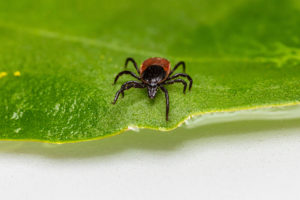




 At home Lyme prevention is available through reputable tick control companies. Professional
At home Lyme prevention is available through reputable tick control companies. Professional 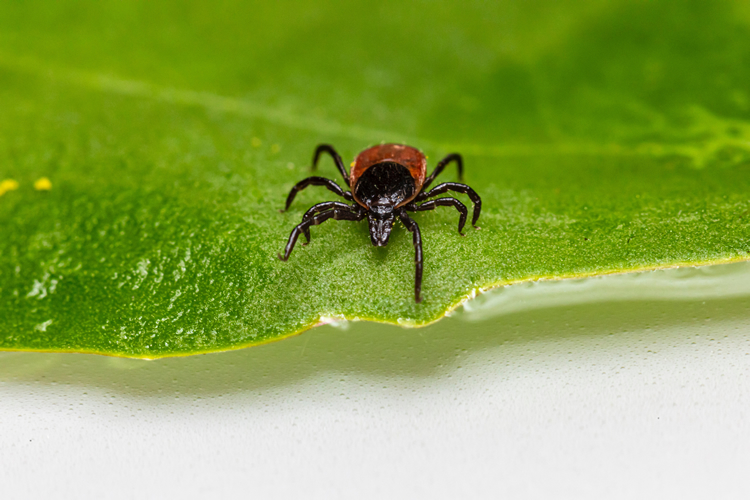

 Center for Lyme Action believes there are up to 2 million chronic Lyme sufferers in the United States. They believe the potential economic cost of Lyme disease exceeds $75 billion. Lyme is non-biased, and affects people of all ages, all walks of life. Due to the territorial expansion of tick populations, Center for Lyme Action says that ALL Americans should be worried about Lyme disease and other tick-borne illnesses. We can no longer say that tick-borne diseases are only happening in the Northeast or Southeast.
Center for Lyme Action believes there are up to 2 million chronic Lyme sufferers in the United States. They believe the potential economic cost of Lyme disease exceeds $75 billion. Lyme is non-biased, and affects people of all ages, all walks of life. Due to the territorial expansion of tick populations, Center for Lyme Action says that ALL Americans should be worried about Lyme disease and other tick-borne illnesses. We can no longer say that tick-borne diseases are only happening in the Northeast or Southeast. 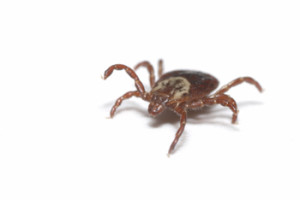 The Lyme Moonshot initiative declares that accelerating efforts to
The Lyme Moonshot initiative declares that accelerating efforts to 

 A few years ago, we learned that
A few years ago, we learned that 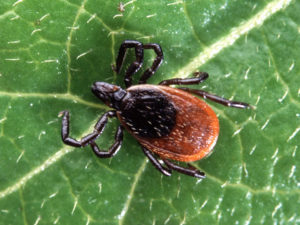 For a very long time, certain regions of the United States were not believed to have Lyme-carrying ticks. For this reason, many patients were never even considered for Lyme testing when they began to show symptoms that mimic other ailments. In recent years, especially with highly-publicized cases of misdiagnoses, doctors in these areas are starting to test for Lyme when symptoms common among other illnesses show up in patients. To say that there has been a learning curve in diagnosing Lyme is an understatement. People, who live in the south and other supposed less-affected areas might still find themselves fighting for proper Lyme diagnoses.
For a very long time, certain regions of the United States were not believed to have Lyme-carrying ticks. For this reason, many patients were never even considered for Lyme testing when they began to show symptoms that mimic other ailments. In recent years, especially with highly-publicized cases of misdiagnoses, doctors in these areas are starting to test for Lyme when symptoms common among other illnesses show up in patients. To say that there has been a learning curve in diagnosing Lyme is an understatement. People, who live in the south and other supposed less-affected areas might still find themselves fighting for proper Lyme diagnoses.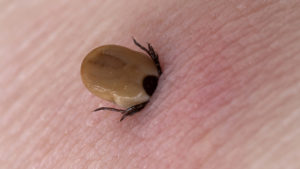






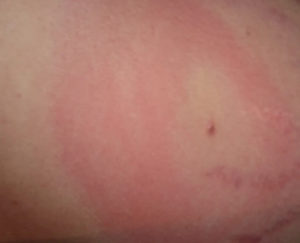

 Be on like the opossum, and protect your family from tick bites all year long with
Be on like the opossum, and protect your family from tick bites all year long with